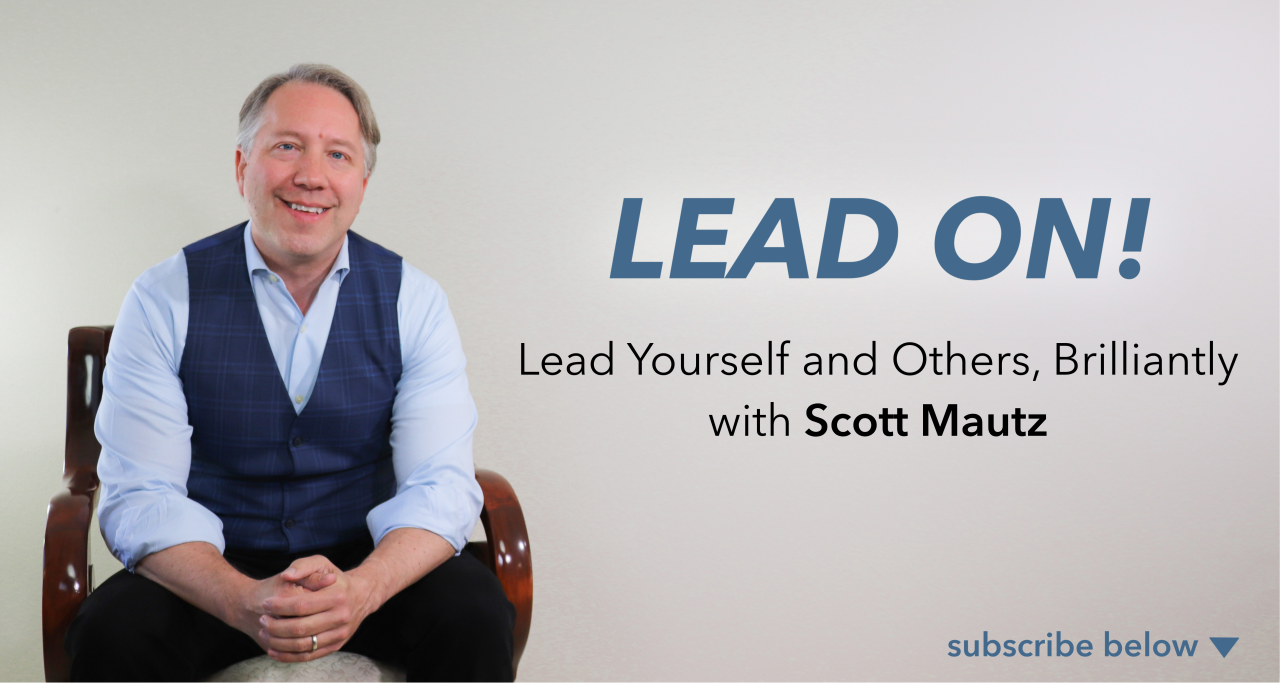
Issue #100: On the Finnish Secret to Happiness, How CEO’s Spend Their Time, and More
If you’d prefer, listen to this issue here. Don't want to miss an issue? Click the bell icon on my LinkedIn profile page to get notified when new issues publish.
* To celebrate the 100th issue of LEAD ON!, a gift for you. Email me at scott@scottmautz.com, put GIFT in the subject header (no other message needed), and we’ll send you a free PDF workbook, discussion guide, cheat sheets, and worksheets that accompany my bestselling, award-winning book, Leading from the Middle.
Thank you for your readership – so much more to come!
INSIGHTS (on leadership/self-leadership)
In the business world, few people must be better at prioritizing than CEO’s. We all could learn something from how, exactly, CEO’s spend their time. But for the longest time, no one really knew, until a first-of-its-kind Harvard Business School study broke it down. Want to prioritize like a CEO? Follow this simple, overall principle that emerged, and spend your time like this:
50% on people, 50% on progress.
Two important things to note here. 0% time is spent on that which does not move things forward. Pause and think about this for a moment. How much of your day is spent on preventing things from going backwards, maintaining status quo, or just frittered away on irrelevant tasks?
CEO’s spend the other half of their time on people – relationships, organization and culture building, and professional development (note: I rounded up to 50%, as some of the other time expenditures listed in the study require heavy people interaction). Leaders, can you honestly say you’re spending 50% of your time on people right now? (Some would say 50% isn’t enough, by the way).
IMPERFECTIONS (a mistake many make)
The country of Finland has been ranked the happiest on earth for six consecutive years, according to the World Happiness Report. Why? What is the Finnish secret to happiness, and what mistake do we make that prevents us from matching their level of joy?
At first glance, as this New York Times article points out, the access to stunning nature and the cultural norm of a strong social safety net, rear their heads. On closer examination though, the real answer is tied more closely to the spirit of the Finnish idea, “sisu” – an expectation that Finns endure difficulty without complaint. As one Finn put it, “Being sad or not content with our life would be seen as ungrateful.” In other words:
Happiness is knowing when you have enough.
That's worth a visual reinforcement:

This week, take stock of all you have, and ask yourself, “Why can’t this be enough?” If a bit more is needed, OK, define it – as long as you set achievable goals within a reasonable time frame. And as long as you’re honest in your assessment on what really makes you happy, what really is enough. The broader point here is to not constantly move the goalposts on what happiness is, that it will come only if you could get that one more thing.
Finish that thinking, and try the Finnish way of thinking, instead.
IMPLEMENTATION (one research-backed strategy, tip, or tool)
Brett Goldstein, the actor who plays the gruff, beloved character, Roy Kent, on the smash-hit Ted Lasso, is here, he’s there, he’s every *%!&in where (show watchers will get that). He’s also the co-creator of the hit series “Shrinking” (quite funny, by the way), has entered the MCU (Marvel Cinematic Universe) by playing the role of Hercules, has been on every major talk show of late, and has much more in store for the future.
He recently revealed to The New York Times his success secret. It’s a mantra of sorts:
Don’t you dare settle for fine.
I want to end the 100th issue on this thought. There are 1,000 things I don’t get right - but this isn’t one of them. I try my absolute best to never settle for “fine.” Yes, on occasion, “fine” is necessary for sanity and productivity – and I even preach the importance of knowing when “fine” is OK. But as a professional, and life, mantra, not so much.
I never stop at fine in my books, keynotes, trainings, classes, LinkedIn Learning courses, interviews, or anything I take on. It has served me well. I humbly encourage you to consider the power of adopting this mindset.
Certainly, fine is never good enough for LEAD ON! I hope you’ve felt that in these first 100 issues. Here’s to many hundreds more. Thank you again for your readership. Share this publication with a friend if you'd be so kind.
******
If you know someone who'd like this publication, please share! To further grow your leadership/self-leadership skills, check out all my courses on LinkedIn Learning below:
And get my "Soundview 2021 Best Business Book" and "Bulk Books bestseller," Leading from the Middle: a Playbook for Managers to Influence Up, Down, and Across the Organization.
Proven Intrapreneur and Entrepreneur | Frehner-Jens helps business leaders design the best plan to turn an innovation into a successful new product, service, or business – faster.
1yCongrats on your 100th issue. Always love the words of wisdom and inspiration. Cheers to your next 100 issues and beyond. LEAD ON, my friend!